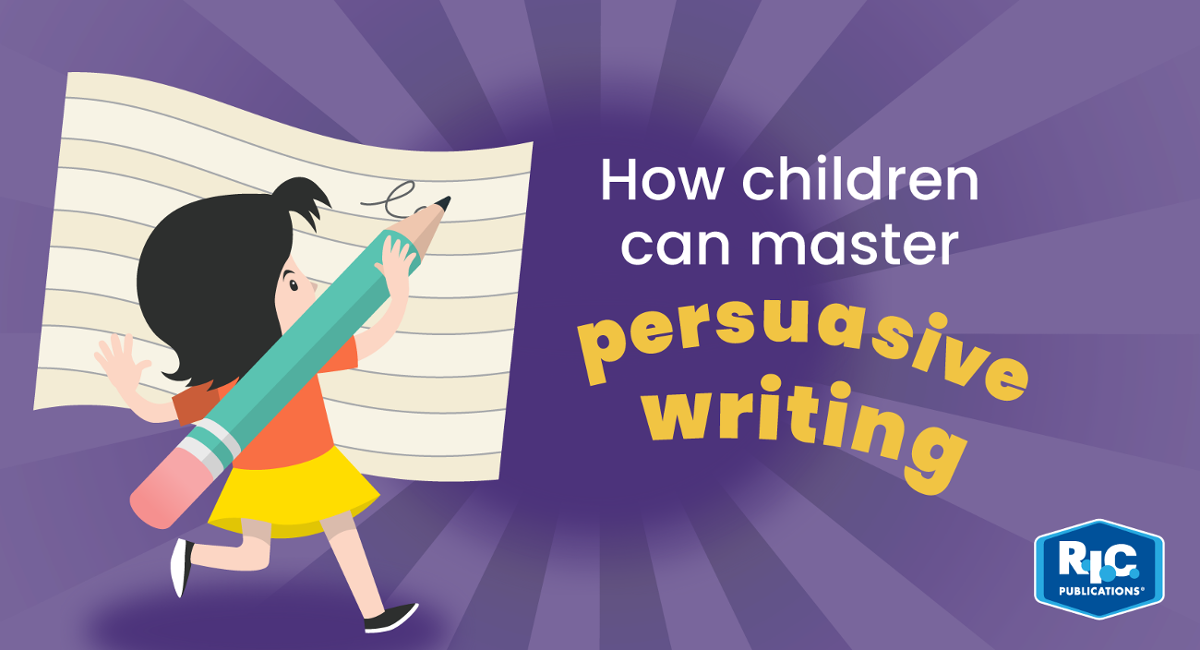- Wednesday 09 September 2020
- 0 Comments
Mastering the art of persuasion gives children (and adults) the ability to share their opinion in a way that is convincing and inspires action.
Think of Martin Luther King’s brilliant oratory changing hearts and minds, 12-year old Severn Cullis-Suzuki addressing the Rio Summit on climate change, or looking closer to home, Stan Grant’s eye-opening essays and speeches on the Indigenous experience in Australia.
The opinions of young people matter: helping them find their voice and have the confidence and skills to share it—whether on paper, in a debate or in front of a crowd—is an incredible gift.
Here are some of our favourite techniques for persuasive writing: by teaching effective persuasive writing, you’re handing your budding essayists the tools to convince, inspire and make change.
1. Set the scene
Explain to your class what persuasive writing is why it matters—in other words, persuade them!
Help them to understand that it isn’t merely about doing well in an assignment, it’s about equipping them with the ability to convince. There are some incredible examples of persuasive writing and speaking out there—op-eds, speeches and so on. Martin Luther King’s celebrated 'I have a dream' speech is a favourite in classrooms around the world for good reason. A quick search for 'inspiring speeches' will leave a lasting impression, but for an amusing example of how not to persuade that will leave your classroom in stitches, check out Shia LaBeouf’s hilarious parody of motivational speeches. Talk about what worked in the speeches or essays, what was persuasive and why.
2. Create a framework
Before children start writing, they need to prepare a subject and their thoughts around it.
Ask small groups to have conversations about things they’d like to see change that really matter to them (whether in their lives, in the world around them or the world at large) and why they feel that way. Talk about a few things you’d like to see change, too—brainstorming together should help get the ideas flowing!
Next, define who the reader of the text could be—once the topic and audience are decided, it’s time to start mind-mapping reasons behind these proposed changes. For this exercise, children will jot down a few primary reasons as headers then expand on them (this doesn’t have to be in full sentences at this stage). During this process, they can start to research facts that support their argument, which will lead to more robust arguments, and can even lead to new reasons. Finally, they’ll put their debating hats on and think about what counter-arguments could arise from someone who doesn’t share their opinion, and how these could be addressed.
Before workshopping their ideas as individuals or in groups, they may want to do a dry-run by workshopping an idea together and coming up with possible reasons to make sure that everyone has a firm grasp of the exercise.
3. Write!
And now, the writing starts!
Children should come up with an introduction to engage the reader; they should ideally open with a 'hook' (a surprising statistic, quotation, question etc.) and then move on to summarising what their argument is. For the body of the text, they will expand on the reasons behind their argument, incorporate possible counter-arguments and their responses to these, possible alternatives, why advantages outweigh disadvantages and so forth.
They should ensure that the writing is working towards a goal, that it avoids unnecessary repetition, and that they think about how the audience will feel as they read it (ideally, inspired to act). Rather than writing too broadly and only covering the topic at a surface level, they should decide what the most important points are and how they can dive deeper to break through and convince the reader.
As they write, they can continue to research facts that support their arguments, and even address those that do not. Make it clear that while researching they are welcome to change their stance, go back to square one and have an even stronger essay at the end. It’s a great opportunity to practise critical thinking!
Now it’s time for the conclusion: summarise the argument, the reasons behind it, and the action that the writer would like the reader to take.
Once they’ve finished their first draft, let things settle for a day or two; you’ve likely found in your own writing that you can improve greatly upon a first draft after you come back to it with a fresh mind. Finally, it’s time to revise, improve upon and then submit.
At R.I.C. Publications, we love inspiring young people to share their voices while cultivating a love of the English language. Our Persuasive text posters are ideal for this and are perfect for the classroom. Covering the definition of persuasive text, types of persuasive text, language features, vocabulary and structures, these posters also come with a handy persuasive writing checklist to help children do their best work.
|
|
On the back, you’ll also find teacher support to help you effectively guide your class into becoming persuasive writers. The posters are great conversation starters while you’re introducing the concepts behind persuasive writing techniques and make a great reference point while they are workshopping their ideas and turning them into polished works.
Explore our Persuasive text poster series
For more great English teaching ideas, keep an eye on the English category of our blog, Teaching ideas, and explore our English teaching resources.
Related Posts:
- Free English Grammar Game
- Free Reading Comprehension Resource Pack
- Enhancing fluency through English skills

.jpg)